To read DENGUE: THAILAND'S OTHER FATAL DISEASE (PART I) : https://bit.ly/2PugJeX
In recognition of the fact that dengue is prevalent in Association of Southeast Asian Nations (ASEAN) member states, the 10th ASEAN Health Ministers Meeting in 2010 declared June 15 as ASEAN Dengue Day. Since then, this day has served as a key regional advocacy point to strengthen relevant information exchange and raise awareness about prevention and control measures.
Dengue is a global and regional threat causing a major additional public health burden for all communities amidst the COVID-19 pandemic. This neglected tropical disease has a wide clinical spectrum which includes both severe and non-severe clinical manifestations. Dengue continuously spreads as a mosquito-borne viral disease throughout the Asia Pacific Region, and is no respecter of national borders. Nearly 75% of all dengue cases worldwide occur in Asia and the Pacific. National leaders recognize that preventive measures need to be taken at the regional level in order to protect people within their borders. ASEAN is a driving force in preparedness against dengue and all regional health threats.
Dengue is a global and regional threat causing a major additional public health burden for all communities amidst the COVID-19 pandemic. This neglected tropical disease has a wide clinical spectrum which includes both severe and non-severe clinical manifestations. Dengue continuously spreads as a mosquito-borne viral disease throughout the Asia Pacific Region, and is no respecter of national borders. Nearly 75% of all dengue cases worldwide occur in Asia and the Pacific. National leaders recognize that preventive measures need to be taken at the regional level in order to protect people within their borders. ASEAN is a driving force in preparedness against dengue and all regional health threats.
Partial 2020 dengue statistics for ASEAN Member States, showing cases recorded since January 1.
|
Brunei Darussalam
The Ministry of Health reported 43 cases of dengue and one death on July 25. Cambodia As of July 16 authorities reported 3,649 dengue infections and four deaths. Indonesia On July 8 authorities reported the detection of 71,633 dengue cases and 459 deaths. Laos Laos had reported 3,932 dengue infections and nine deaths as of July 29. Malaysia As of July 14, a total of 59,378 people had contracted dengue, with 96 fatalities. |
Myanmar
Myanmar reported 2,862 dengue infections with 20 deaths as of June 27. Philippines Official figures as of June 27 put the number of infections at 52,601 and deaths at 190. Singapore As of July 27, Singapore had registered more than 20,600 dengue cases and 19 fatalities. Thailand A total of 31,438 people were diagnosed with dengue and 21 of these had passed away as of July 21. Vietnam Up to July 16, a total of 35,624 people had contracted dengue, with three deaths reported. |
WHO report on Dengue worldwide
According to the World Health Organization (WHO), the incidence of dengue has grown dramatically around the world in recent decades. The vast majority of cases are asymptomatic or mild and self-managed, and hence the actual numbers of dengue cases is under-reported. Many cases are also misdiagnosed as other illnesses.
The WHO website says one modeling estimate indicates 390 million dengue virus infections per year (95% credible interval 284-528 million), of which 96 million (67-136 million) manifest clinically (with any severity of disease). Another study, on the prevalence of dengue, estimates that 3.9 billion people are at risk of infection with dengue viruses. Despite a risk of infection existing in 129 countries, 70% of the actual burden is in Asia.
The number of cases is increasing as the disease spreads to new areas including Europe. The threat of a possible widespread outbreak of dengue now exists in Europe; local transmission was reported for the first time in France and Croatia in 2010 and imported cases were detected in three other European countries. In 2012, an outbreak of dengue in Portugal’s Madeira archipelago resulted in over 2,000 cases, and imported cases were detected in mainland Portugal and 10 other countries in Europe.
Cases are now observed on an almost annual basis in the native populations of many European countries. Among travellers returning from low- and middle-income countries, dengue is the second most diagnosed cause of fever after malaria.
In 2020, dengue continues to affect many countries, with reports of increased numbers of cases in Bangladesh, Brazil, Cook Islands, Ecuador, India, Indonesia, Maldives, Mauritania, Mayotte (Fr), Nepal, Singapore, Sri Lanka, Sudan, Thailand, Timor-Leste and Yemen.
The largest number of dengue cases ever reported globally was in 2019. All regions were affected, and dengue transmission was recorded in Afghanistan for the first time.
The WHO website says one modeling estimate indicates 390 million dengue virus infections per year (95% credible interval 284-528 million), of which 96 million (67-136 million) manifest clinically (with any severity of disease). Another study, on the prevalence of dengue, estimates that 3.9 billion people are at risk of infection with dengue viruses. Despite a risk of infection existing in 129 countries, 70% of the actual burden is in Asia.
The number of cases is increasing as the disease spreads to new areas including Europe. The threat of a possible widespread outbreak of dengue now exists in Europe; local transmission was reported for the first time in France and Croatia in 2010 and imported cases were detected in three other European countries. In 2012, an outbreak of dengue in Portugal’s Madeira archipelago resulted in over 2,000 cases, and imported cases were detected in mainland Portugal and 10 other countries in Europe.
Cases are now observed on an almost annual basis in the native populations of many European countries. Among travellers returning from low- and middle-income countries, dengue is the second most diagnosed cause of fever after malaria.
In 2020, dengue continues to affect many countries, with reports of increased numbers of cases in Bangladesh, Brazil, Cook Islands, Ecuador, India, Indonesia, Maldives, Mauritania, Mayotte (Fr), Nepal, Singapore, Sri Lanka, Sudan, Thailand, Timor-Leste and Yemen.
The largest number of dengue cases ever reported globally was in 2019. All regions were affected, and dengue transmission was recorded in Afghanistan for the first time.

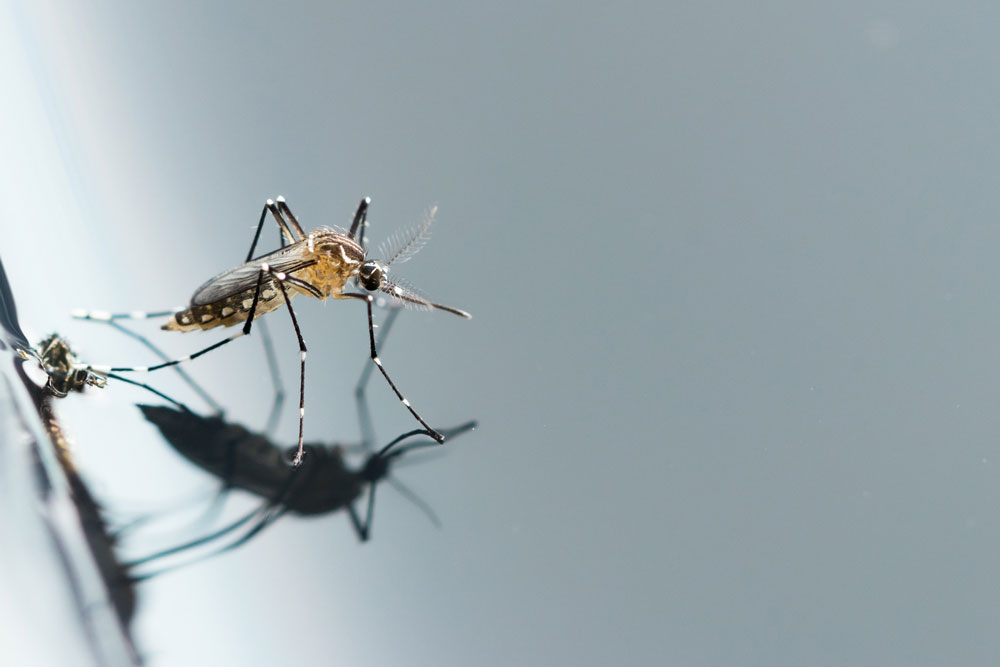
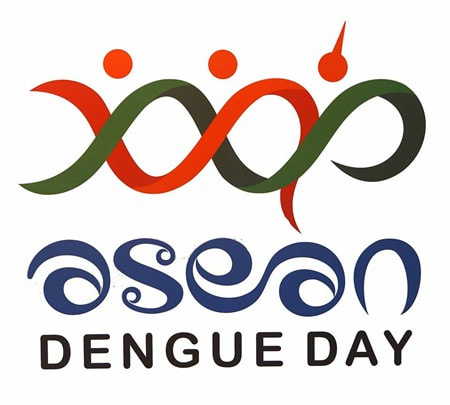
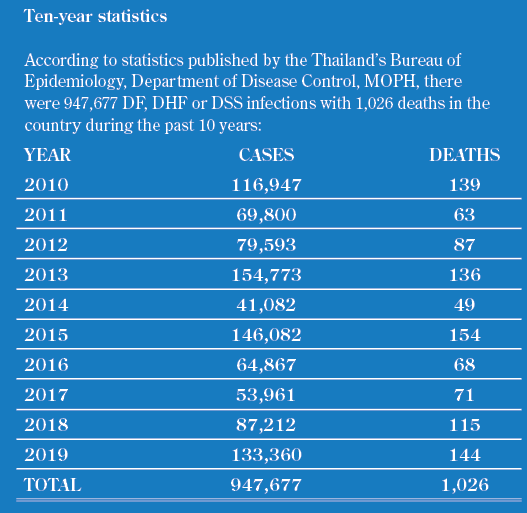
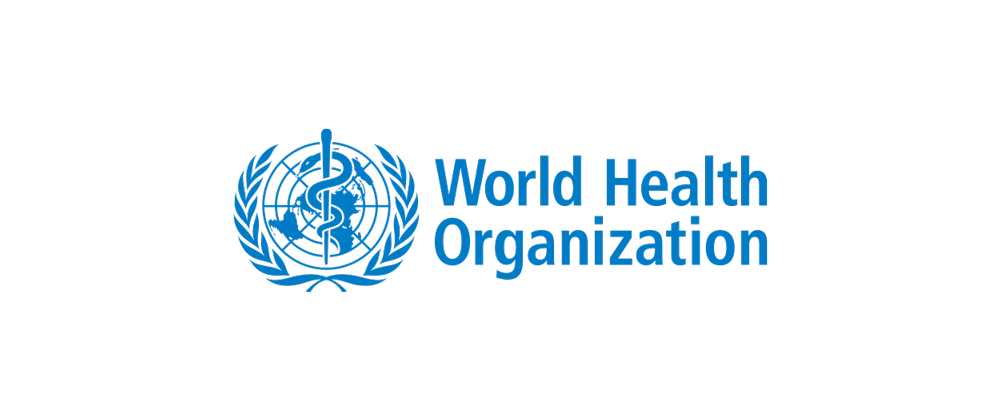
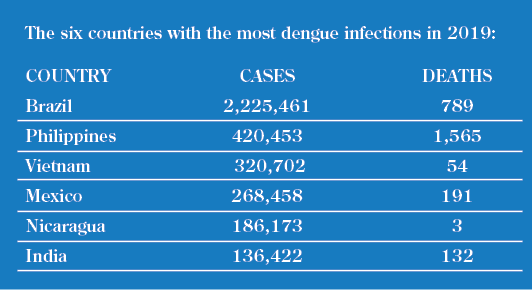
 RSS Feed
RSS Feed



